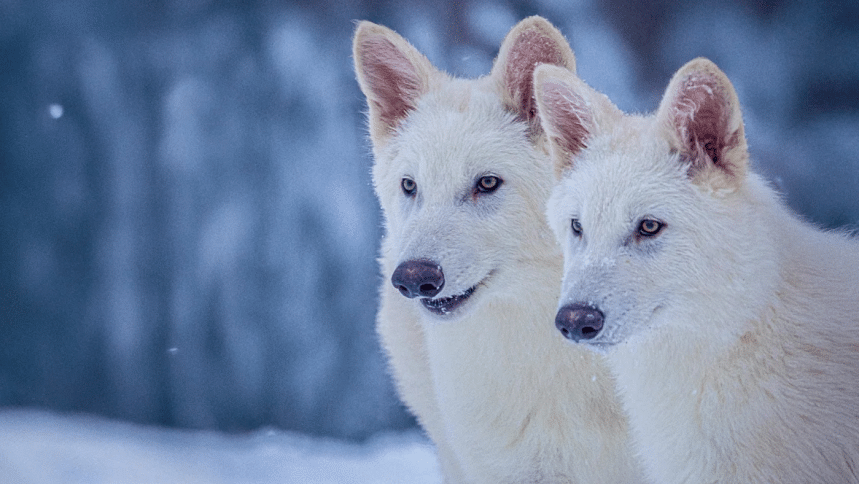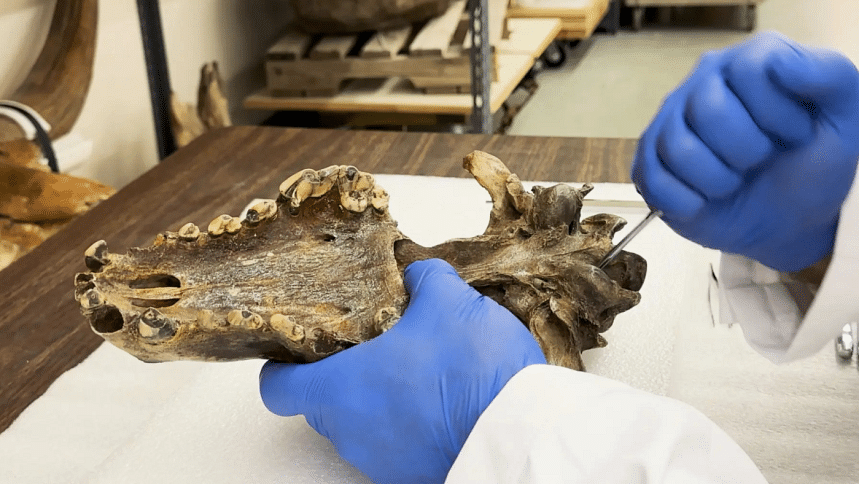Scientists revive 12,500-year-old extinct dire wolves

Dire wolves are best known today as the hulking, loyal beasts that guarded the Stark children in 'Game of Thrones', lifted from the pages of George R.R. Martin's novel series 'A Song of Ice and Fire'. In most minds, they belong to the realm of fantasy—alongside dragons and white walkers.
But unlike their mythical counterparts, dire wolves were once very real. These powerful predators roamed Ice Age North America, hunting massive prey like bison and ground sloths, and ruling the ancient wilds with sharp teeth and pack strength. Long extinct, they've lived on in fiction—until now.
A Texas-based biotech company has brought dire wolves—a species extinct for about 10,000 to 12,500 years—back to life in a landmark genetic engineering project. Colossal Biosciences, known for its ambitious "de-extinction" efforts, recently announced three snowy-white dire wolf pups named Romulus, Remus, and Khaleesi, marking the first time the mythical predators have walked the Earth since the last Ice Age.
How it happened
Using DNA extracted from a 13,000-year-old dire wolf tooth and a 72,000-year-old skull, scientists edited the genes of common grey wolves to match the ancient genome. Domestic dogs served as surrogate mothers, with embryos implanted via a less invasive method that uses blood cells instead of tissue samples. Romulus and Remus were born in October 2024 and Khaleesi in January 2025, all via cesarean section to minimise risks.

At six months old, Romulus and Remus already weigh 80 pounds and measure four feet long. They are expected to grow up to 150 pounds and about 6 feet when fully grown, according to a report by Time. Unlike domestic dogs, they avoid human contact, retreating when approached. "We have not seen them attempt to hunt any live prey," said Paige McNickle, Colossal's animal husbandry manager, as per the Time report.
Why dire wolves?
Dire wolves once roamed from Canada to Venezuela, hunting megafauna like giant bison. Their extinction likely followed the disappearance of these prey.
Colossal claims reviving them isn't just about nostalgia. Techniques developed could aid endangered species, like red wolves, by reintroducing genetic diversity.
As per the Time report, the company recently cloned four red wolves using "ghost alleles" from coyote hybrids, hoping to stabilise the critically endangered population.
However, critics warn of unintended consequences. "Cloning risks miscarriages, birth defects, and suffering for surrogates," said Columbia University bioethicist Robert Klitzman in the Time report. Others question the wolves' quality of life: Confined to a secret 2,000-acre preserve, they'll never hunt freely or form natural packs.
Colossal counters that their work is a moral duty. "Humans drove extinction; we can reverse it," explained CEO Ben Lamm to Time. The company also aims to revive woolly mammoths by 2028, editing elephant genes to mimic mammoth traits like cold-resistant fur.
Bigger than wolves
The project represents a growing debate over humanity's role in shaping nature. While Colossal frames gene editing as a tool to repair ecosystems, sceptics fear hubris.
Specialised species like dire wolves died because "they were specialised hunters", noted wolf expert Rick McIntyre. It is argued that resurrecting them doesn't solve modern habitat loss.
For now, the pups live under 24/7 care, are fed a diet of raw meat and are monitored for health issues in an undisclosed sanctuary. Their haunting howls—unheard for millennia—echo a paradoxical triumph: a scientific marvel that may never roam beyond a fence.
As Colossal pushes forward, one question lingers: Are we correcting past mistakes or playing a risky game of genetic catch-up? The answer, much like the dire wolf itself, remains wilder than it seems.

 For all latest news, follow The Daily Star's Google News channel.
For all latest news, follow The Daily Star's Google News channel. 



Comments